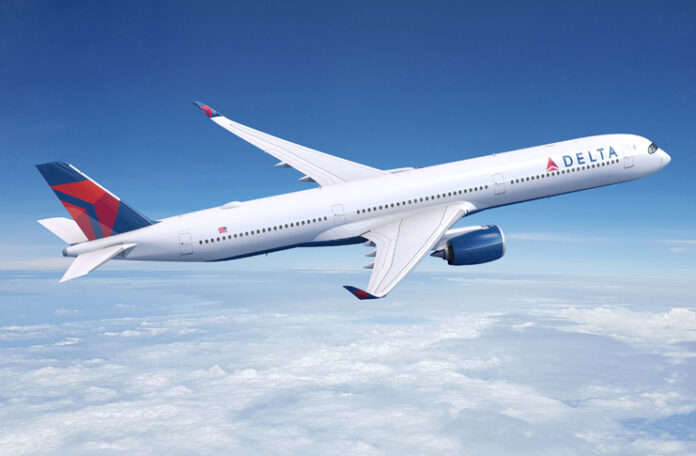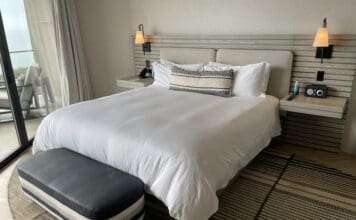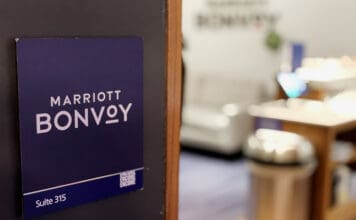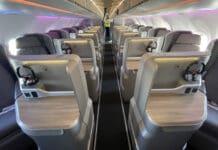TravelingForMiles.com may receive commission from card issuers. Some or all of the card offers that appear on TravelingForMiles.com are from advertisers and may impact how and where card products appear on the site. TravelingForMiles.com does not include all card companies or all available card offers.
Other links to products and travel providers on this website will earn Traveling For Miles a commission that helps contribute to the running of the site. Opinions, reviews, analyses & recommendations are the author’s alone and have not been reviewed, endorsed, or approved by any of these entities. Terms apply to all credit card welcome offers, earning rates and benefits and some credit card benefits will require enrollment. For more details please see the disclosures found at the bottom of every page.
Delta launched its route between Los Angeles and Auckland at the end of October 2023 and in the build-up to the launch date the bookings were strong enough to convince the airline to operate the route year-round rather than just in the northern hemisphere winter.
Since the launch of its LA – Auckland route, Delta has been using the A350-900s that it acquired from LATAM to fly between Los Angeles and Auckland but up until recently, the schedules showed Delta’s original A350s taking over the route from 20 May and continuing to operate the route through the summer and through the next winter season.
This is no longer the case.
As things stand, Delta’s original A350s will take over the route as planned on 20 May but will relinquish the route to the ex-LATAM A350s at the beginning of December. Delta’s original A350s are set to reappear on this route at the beginning of February 2025, but this could easily change between now and then.
So why is this important?
Delta’s original A350s vs ex-LATAM A350s
The ex-LATAM A350s offer a noticeably different interior to the A350s that were designed for and delivered to Delta, so depending on the cabin in which you’re planning to fly, this aircraft swap may be good or bad news for you.
The bad news
There are two pieces of bad news that relate to the ex-LATAM A350s:
Firstly, the Business Class cabin on the ex-LATAM A350s is noticeably inferior to the cabin in Delta’s original A350s as it offers an outdated 2-2-2 cabin layout instead of the modern 1-2-1 layout and seats that you get with the Delta One Suites.
Secondly, the ex-LATAM A350s do not offer a Premium Economy Cabin (Delta Premium Select) while the original Delta A350s do, so if you have a Premium Economy booking on this route for travel between December 2024 and February 2025, you should check your booking if Delta hasn’t already contacted you.
Note: Up until the end of 2023, the ex-LATAM A350s didn’t offer inflight wifi, but Delta has rectified this so connectivity shouldn’t be an issue.
The good news
While the aircraft swap is bad news for Business Class flyers and for anyone wanting to book a Premium Economy seat, the news gets better if you’re planning to sit further back in the aircraft.
Just like the original Delta A350s, the ex-LATAM A350s offer Delta’s extra legroom seats (Delta Comfort+) but they offer considerably more such seats than the original Delta A350s (63 vs 36), and the Comfort+ seats on the ex-LATAM A350s offer slightly more personal space:
- 18″ wide seats vs 17.4″ wide seats.
- 35″ of pitch (legroom) vs 34″ of pitch.
The good news continues with the regular Economy seats where the ex-LATAM aircraft offer seats that are 18″ wide vs the 17.4″ wide seats on the original Delta A350s. Both aircraft types offer just 31″ of pitch between the regular Economy Class seats.
It should be noted that the original Delta A350s offer a larger inflight entertainment screen 11″ vs 9″) and a better inflight entertainment system, but as most sane people would choose to have more personal space over an improved entertainment system on a route of this length, that’s not really a big win for the original Delta A350s.
Quick thoughts
I assume that Delta wants to use the ex-LATAM A350s in the Winter season because they will offer it more capacity during the peak southern hemisphere season (339 seats vs 306 seats), but considering Delta only has Air New Zealand as competition during the northern hemisphere summer but also has to contend with United Airlines (with its Polaris Business Class seats and Premium Economy cabin) in the northern hemisphere winter, I’m surprised to see the airline’s better Business Class cabin and its Premium Economy cabin disappear for a significant part of this period.
I’m also surprised that Delta hasn’t yet started to retrofit the nine A350s that it got from LATAM to match what it offers on its other A350 aircraft. Premium cabin flyers like to be given a uniform offering and while these ex-LATAM aircraft remain as they are, that’s not something that Delta can boast.
Still, as long as the ex-LATAM aircraft remain in their current configuration customers booking the Economy Class cabin should have a more comfortable trip, and as I’m often being reminded that the world doesn’t revolve around Business Class passengers, it’s probably best that these aircraft remain as they are for as long as possible 🙂
Bottom line
For a while, it looked like Delta was going to operate its Los Angeles – Auckland route with its more modern A350s all year round but a schedule change made earlier this month has now revealed that the older style ex-LATAM A350s will reappear on this route from early December.
For some, this will be a win. For others, this won’t be the news they wanted to hear.


















I suspect the reason DL flies the ex-LATAMs to New Zealand is that this is probably a leisure-heavy business class purchase. As such, while 2-2-2 is pretty much never as desirable as the D1 suites, couples and family travel including the ‘overnight window seal leap’ is less of a problem than bothering an unknown fellow executive in an aisle seat.
I do think DL not offering Premium Econ for a flight of that duration is a mistake, both in terms of travel comfort and — from what is generally reported — P.E. is often the most profitable cabin in terms of fare vs. sqft/seat weight/soft product & service cost.